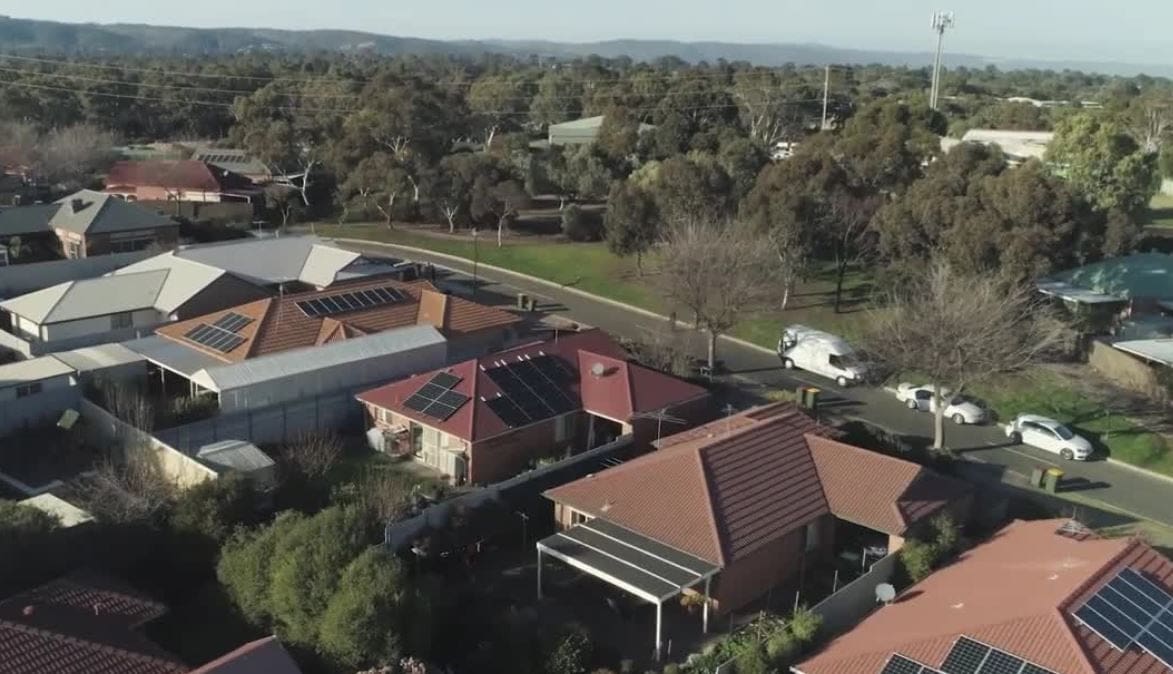The government of Australia and the government of the United States have a lot in common. Both have a lip lock on the buttocks of fossil fuel industry executives. Damn the rising seas and melting ice caps. So what if the Great Barrier Reef is dying. Drill, baby, drill! As with the US, the individual states of Australia are the ones taking climate change seriously and defying the national government by doing something about it.
South Australia, whose capital city is Adelaide, agreed to participate in a virtual power plant program sponsored by Tesla last year. The first phase of the experiment installed rooftop solar systems on just over 1,000 low-income houses and coupled them with Tesla Powerwall home storage batteries. A second phase earlier this year added about 300 more homes to the test population. The batteries store electricity during the day to help power the homes at night. In addition, all the batteries are linked together digitally so that some of that stored electricity can be fed back into the grid to meet peaks in demand or provide power during an outage.
The fossil fuel lunatics went crazy when the virtual power plant idea was proposed, dredging up a million and one reasons why it wouldn’t work. They were wrong. It worked better than anyone dared hope. Now that the first and second phases of the trial are over, the data show that the people who are participating in the pilot program are paying about 20% less for their electricity than their neighbors. Take that, Scott Morrison!
Dan van Holst Pellekaan is a member of the Australian parliament who represents South Australia. In a statement published on the South Australia government website, he says, “This VVP is delivering affordable electricity to some of South Australia’s most disadvantaged households whilst increasing the reliability of the state’s electricity network. Households participating in the Phase 2 trial are charged electricity rates more than 20 per cent better than the Default Market Offer introduced on 1 July 2019.
“Tesla is regularly reviewing and benchmarking the VPP Program Offer to ensure the program continues to deliver the savings promised to customers and that the VPP Program Offer is the best published retail offer in the South Australian market. Results from Phase 1 and Phase 2 are already contributing towards the design of the potential Phase 3 to enable as many families as possible to benefit from this program.
“In particular smaller 5kW solar systems are already being trialed to allow for more properties with smaller roofs or other physical constraints to be included. Phase 3 of the VPP could see 50,000 homes connected to the VPP becoming the equivalent of a 250MW virtual power plant. VPP’s will be an integral part of the future of Australia’s energy system, allowing people with solar panels to store the energy they generate during the day to power their home after the sun goes down.”
The success of the initial phase of the VPP program should insure that funding for the expansion of the plan will be readily available.









